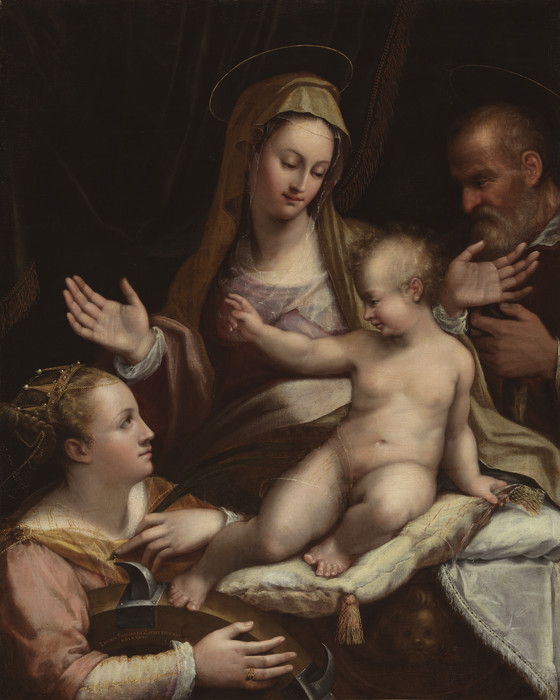Lavinia Fontana was one of the most successful female artists of the Renaissance whose practice centered on portraits of the aristocratic citizens of her native Bologna....
Lavinia Fontana was one of the most successful female artists of the Renaissance whose practice centered on portraits of the aristocratic citizens of her native Bologna. Unusually for a woman, her work also included religious and mythological subjects. She was born into an artistic family in 1552. Her father, Prospero Fontana (1512-1597) was an enlightened Mannerist painter known as much for his paintings, many of which betray his apprenticeship under Vasari, as for his passion for literature and his taste for antiques which he collected. Lavinia’s early education took place in this refined milieu. Rapidly she was able to negotiate the complicated paths and obstacles set in front of her: as a woman she learned how to navigate the complexities of personal rank, as well as admittance by peers, connoisseurs and dealers. Devout, she married and had many children: she was proud of being an exemplary mother while gaining recognition and even popularity. Her fame reached Rome. In 1604, Pope Clement VII called her there. Her later years in Rome were marked by success as well.
This fine “Sacra Conversazione” ranks among the most accomplished works of the painter. Its softness – which owes much to both Raphael and Correggio, sets it apart from many of her paintings in which the artist continues the decorative and somewhat stiff manner of her father. Indeed this may have had to do with Lavinia’s intention to participate in the Counter Reformation movement and to follow carefully the suggestions of the Bolognese Cardinal Paleotti (1522 1597) whose treatise Discorso intorno alle immagini sacre e profane (1592) was a manual intended to explain the clarity and simplicity required by the Council of Trent in the treatment of religious images. Here Lavinia clearly attempts to reform the Mannerist tradition and to introduce through emotional interaction and expressive gestures the kind of art capable of “moving the spirit” recommended by Cardinal Paleotti. (J. Patrice Marandel, The Robert H. Ahmanson Chief Curator of European Art)
More...



